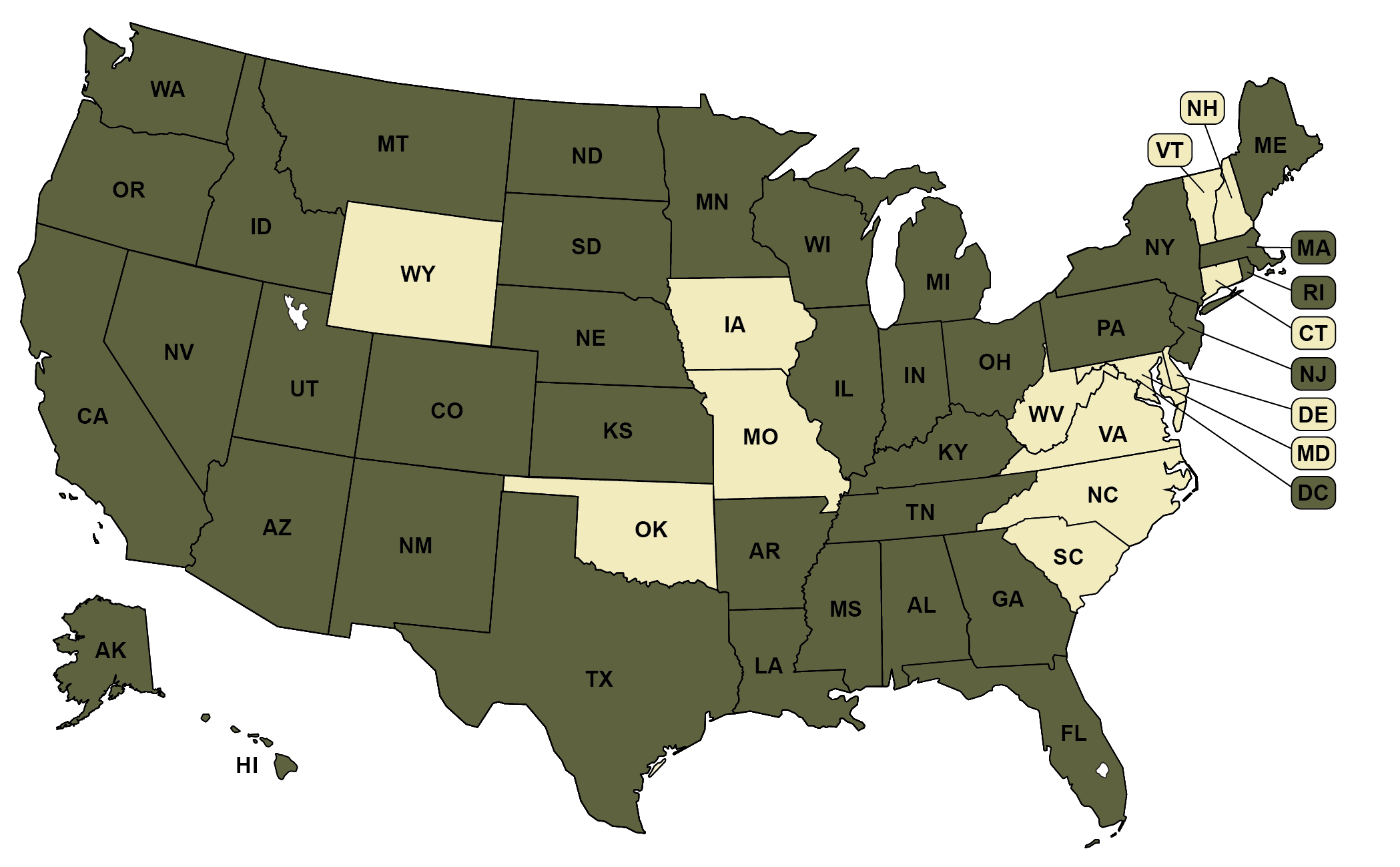States use a variety of methods to verify that absentee and mail ballots were returned by the correct voter. Many states conduct rigorous signature verification processes or match identifying information such as driver’s license numbers, while some states only confirm the ballot is signed or the voter has affirmed their own identity.
-
State requires signature matching or uses other identifying information to verify absentee/mail ballots
(37 states + D.C.)
-
State does not require signature matching or use other identifying information to verify absentee/mail ballots
(13 states)
Recommended citation: Movement Advancement Project. "Absentee/Mail Ballot Verification." https://www.mapresearch.org/democracy-maps/mail_ballot_verification. Accessed [day of access]
Breakdown by Population
*Note: These percentages reflect the voting-eligible population, as reported by the United States Election Project.
84 % of population lives in states that require signature matching or use other identifying information to verify absentee/mail ballots
16 % of population lives in states that do not require signature matching or use other identifying information to verify absentee/mail ballots


